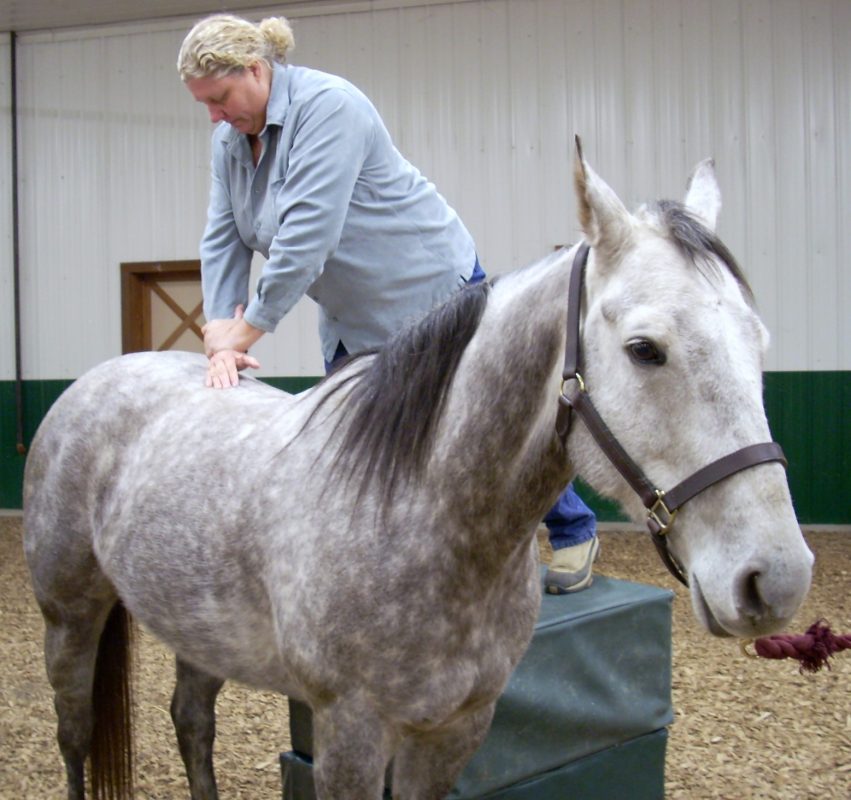You’re probably scratching your head right about now, aren’t you? Well, let me take a few minutes to explain to you the level of importance the following case carries for the larger narrative of governmental overreach and over-regulation.
No, it is not a federal agency defying the new administration. Better yet, it takes place at the state level as an evident issue that affects many across the Union.
We open our scene, very recently, in Committee Room 271 at the Colorado State Capitol building where the Colorado House Agriculture and Natural Resources Committee heard Senate Bill 17-135, presented by Republican State Representative Kimmi Clark Lewis and Republican State Senator Vicki Marble to streamline and alleviate an antiquated regulatory regime on animal chiropractic.
Simply, the legislation would have allowed pet owners and livestock producers (of the many groups this would affect) direct access to animal chiropractors without the need for veterinary medical referral or, according to the statute, a “clearance” from a doctor of veterinary medicine (DVM).
Sadly, the legislation was killed in the committee 7 to 6 on the grounds that antiquated statutes and the people who create them know how to treat animals better than their owners.
In both federal and state statute, animals are classified as unique property of the owner. For example, obviously, an animal is property but with legal rights per measures like the federal Animal Welfare Act in a card system that considers whether or not the specific animal has weak, strong, or preferred legal rights.
Moving past the mumbo jumbo and getting out of the weeds of animal welfare policy, the end result is that most domesticated animals, regardless of pets or livestock, still remain as property and clear chattel. Because of this, an owner, per the intent of SB 135, should retain the right to dictate the best type of care for their animals, if they choose to receive any or not.
One of the major concerns that ended in the bill dying was the concern that DVMs used the state government’s role in regulating licensed occupations to squeeze on chiropractors that specialize in caring for animals. One member of the committee called this “regulation of an occupation by another occupation” just because they practice is not sought out among the veterinary medicine community.
This is happening across the United States. In effect, at least in the case of Colorado, the requirement that an animal owner must get a “referral” or “clearance” in order to receive adjunctive and elective care options like animal chiropractic, per statute based on an alleged compromise reached several years earlier. Despite that, due to the major risk of legal liability associated with prescribing a specific form of care, DVMs do not issue these clearances forcing animal owners, like ranchers, to go underground in search of animal chiropractic services. This, essentially, lend credibility to the statement that animal chiropractors are acting illegally to provide a service to animal owners that, in many cases, desperately need animal chiropractic care.
Because of the DVMs inaction and the government regulation, a black market is created putting property owners, agricultural producers of all types, and, even, people dependent on service animals (for example) at risk in searching for help in regards to their animal’s physical and muscular wellbeing.
Other concerns that resulted in the killing of the bill showed no regard for the agriculture community. Nationwide, there are shortages of large animal DVMs focused on treating patients in the livestock and ranching industries in rural areas. For Arizona, the shortage has essentially threatened the survival of the cattle industry in the state. This is the case for other states including Utah, Montana, and Colorado, among several others. Because of lack of DVM access in rural areas, cattle and equine owners must find gaps in the care for the animals that result in income for many of them. Specifically, working horses that get ticked in the muscles are useless. If a rancher has to drive 150 plus miles to the nearest large animal DVM with a chiropractor that specializes in animals is 50 miles, the owner will resort to going to the chiropractor in an effort to save hundreds (maybe thousands) of dollars for travel expenses and vet consultation fees.
One final example of the inadequate application of the regulation that SB 135 sought to eliminate is that, as aforementioned, the members of the veterinary sciences are using the government to squash another field that is meant to complement primary care for an animal in an elective capacity. This not only constricts a pet owner’s property rights but it also directly creates and an uneven market for what is acceptable in veterinary care. Many DVMs receive cross training in animal chiropractic and retain the certification; yet, for the chiropractors that only have the required certification to practice on animals. DVMs claim that the only reason that this regulation should not be removed was because that the chiropractors don’t have the training or the ability to identify matters of disease that require advance diagnosis, despite the extensive training to become an animal chiropractor.
This is an inaccurate assumption, due in part to the role of the chiropractor, for both animals and humans, is to provide elective treatment on ailments that are strictly chiropractic. Much of the training that the animal chiropractors face results in them referring their clients to certified DVMs to treat issues that the chiropractor identifies that is above “their pay grade” in a sense. Many of these relationships end with fruitful partnerships between DVMs and chiropractors. Yet, the only thing that stops this from being widespread is ambiguous policies, state to state, that strictly regulate the trade and commerce of this very select and niche marketplace.
The end argument to this convoluted issue, though, is that the very principles of the free market that our country and states pride themselves on were being compromised.
This Colorado case, specifically, serves as a textbook example of government not doing what is best for the marketplace… which is, in effect, letting the market be as free as it possibly can. The government is inherently bad and it only knows how to destroy the value of a marketplace, rather than create one. Though I used a very obscure example and policy segment to present this sentiment, the very same happenings appear in all forms of business and industry all over the country.
Federal and state governments must rely on the private sector for a plethora of things and this should include the knowledge of best practices of a specific private industry. Career bureaucrats don’t understand this, whatsoever. Based on the macro approach of this, it is my diagnosis that Rep. Lewis and Senator Marble had this in mind and acted in the best interest of their constituents and the people of Colorado, specifically.









